Brazilian Jiu Jitsu vs Karate vs Taekwondo – Choosing the Right Martial Art
Table of Contents
- Introduction
- History and Origins
- Brazilian Jiu Jitsu
- Karate
- Taekwondo
- Techniques and Styles
- Brazilian Jiu Jitsu Techniques
- Karate Techniques
- Taekwondo Techniques
- Training and Practice
- Brazilian Jiu Jitsu Training
- Karate Training
- Taekwondo Training
- Effectiveness in Self-Defense
- Brazilian Jiu Jitsu for Self-Defense
- Karate for Self-Defense
- Taekwondo for Self-Defense
- Sport and Competition
- Brazilian Jiu Jitsu Competitions
- Karate Competitions
- Taekwondo Competitions
- Cultural Impact and Philosophy
- The Philosophy of Brazilian Jiu Jitsu
- The Philosophy of Karate
- The Philosophy of Taekwondo
- Choosing the Right Martial Art
- Conclusion
Introduction
Martial arts offer a diverse range of techniques, philosophies, and training methodologies, each with unique benefits and challenges. Among the most popular are Brazilian Jiu Jitsu (BJJ), Karate, and Taekwondo. This blog post aims to explore these three martial arts in-depth, comparing their histories, techniques, training methods, effectiveness in self-defense, competition formats, and cultural impacts. Whether you are considering starting martial arts or simply curious about these disciplines, this comprehensive comparison will provide valuable insights.
History and Origins
Brazilian Jiu Jitsu
Brazilian Jiu Jitsu, often abbreviated as BJJ, traces its origins to Japan. It was developed from Judo, which was founded by Jigoro Kano in the late 19th century. In the early 20th century, Judo practitioners Mitsuyo Maeda and others traveled to Brazil, where they taught the art to the Gracie family. The Gracies adapted and refined these techniques, focusing on ground fighting and submissions, to create what we know today as Brazilian Jiu Jitsu. To learn more about the detailed history of BJJ, visit this Brazilian Jiu Jitsu article.
Karate
Karate originated in Okinawa, Japan, and has roots in indigenous fighting systems combined with Chinese martial arts. Developed in the early 20th century, Karate emphasizes striking techniques such as punches, kicks, and knee strikes. It evolved through various styles, each with its own unique characteristics, such as Shotokan, Goju-Ryu, and Shito-Ryu. Karate became popular worldwide after World War II, largely due to the efforts of masters like Gichin Funakoshi and Chojun Miyagi.
Taekwondo
Taekwondo, a Korean martial art, has a more recent history, officially established in the 1950s. It combines elements of traditional Korean martial arts such as Taekkyeon and Gwonbeop, as well as influences from Karate. Taekwondo is renowned for its high, fast kicks and dynamic footwork. It became an Olympic sport in 2000, further cementing its global popularity. For a deeper look into the history of Taekwondo, explore related articles on martial arts history websites.
Techniques and Styles
Brazilian Jiu Jitsu Techniques
Brazilian Jiu Jitsu primarily focuses on grappling and ground fighting. Key techniques include joint locks, chokeholds, and positional control. BJJ emphasizes the concept of leverage and technique over strength, allowing smaller practitioners to defeat larger opponents. Techniques such as the armbar, triangle choke, and rear-naked choke are staples in BJJ. The sport also includes extensive training in takedowns and transitions. For an in-depth understanding of BJJ techniques, check out this Brazilian jiu jitsu theory and technique guide.
Karate Techniques
Karate techniques are diverse and primarily striking-based. They include punches (tsuki), kicks (geri), knee strikes, elbow strikes, and open-hand techniques. Karate also teaches blocking techniques (uke) and stances (dachi) that are crucial for both offense and defense. Each Karate style has its own unique techniques and forms (kata), which are practiced to develop precision, power, and fluidity. Traditional Karate training also includes kumite (sparring) to apply techniques in a controlled environment.
Taekwondo Techniques
Taekwondo is characterized by its emphasis on high, fast, and spinning kicks. Common techniques include the roundhouse kick (dollyo chagi), side kick (yeop chagi), and axe kick (naeryo chagi). Taekwondo also includes hand strikes and blocks, though kicks are the primary focus. The sport’s training often involves practicing patterns (poomsae), which are sequences of movements that simulate combat against imaginary opponents. Sparring (gyorugi) is a significant aspect of Taekwondo training, especially in preparation for competitions.
Training and Practice
Brazilian Jiu Jitsu Training
Training in Brazilian Jiu Jitsu typically involves a combination of technique drilling, positional sparring, and full sparring (rolling). Classes often start with a warm-up, followed by instruction on specific techniques, which students practice with a partner. Positional sparring focuses on improving specific aspects of grappling, while rolling allows practitioners to apply techniques in a live, dynamic setting. BJJ training is physically demanding and promotes cardiovascular fitness, strength, and flexibility.
Karate Training
Karate training is structured around three main components: kihon (basics), kata (forms), and kumite (sparring). Kihon involves repetitive practice of basic techniques to build strong foundations. Kata are pre-arranged sequences of movements that combine various techniques into fluid patterns, teaching practitioners timing, precision, and rhythm. Kumite ranges from controlled practice with set rules to free sparring, allowing students to test their skills in a more realistic context. Karate training also emphasizes discipline, respect, and mental focus.
Taekwondo Training
Taekwondo training typically includes a mix of conditioning exercises, technique practice, patterns (poomsae), and sparring (gyorugi). Classes often begin with a warm-up and stretching, followed by drills to improve specific kicks and strikes. Poomsae practice helps develop balance, coordination, and memorization of techniques. Sparring sessions, which can be either non-contact or full-contact, are crucial for applying techniques in a competitive environment. Taekwondo training is known for its high-intensity cardio workouts, enhancing overall fitness and agility.
Effectiveness in Self-Defense
Brazilian Jiu Jitsu for Self-Defense
Brazilian Jiu Jitsu is highly effective for self-defense, particularly in situations where a confrontation goes to the ground. BJJ teaches practitioners how to control and submit opponents using leverage and technique, making it possible to defend against larger attackers. Ground fighting skills are essential for dealing with real-life scenarios where fights often end up on the ground. BJJ also emphasizes situational awareness and the ability to de-escalate conflicts. For more information on BJJ’s self-defense applications, visit this Brazilian jiu jitsu self defense article.
Karate for Self-Defense
Karate is effective for self-defense due to its emphasis on powerful strikes and quick, decisive movements. Practitioners learn to generate significant force with punches, kicks, and other strikes, which can incapacitate attackers swiftly. Karate also teaches blocking and evasion techniques, helping practitioners avoid or deflect incoming attacks. The discipline fosters a strong mental attitude, promoting confidence and awareness in potentially dangerous situations. Traditional Karate training often includes practical self-defense scenarios.
Taekwondo for Self-Defense
Taekwondo can be effective for self-defense, particularly due to its powerful and versatile kicking techniques. High, fast kicks can create distance and deliver forceful impacts, deterring attackers. Taekwondo also incorporates hand strikes and blocking techniques that are useful in close-range encounters. The sport’s emphasis on speed and agility helps practitioners react quickly to threats. However, effective self-defense training in Taekwondo should include a focus on practical applications and situational awareness.
Sport and Competition
Brazilian Jiu Jitsu Competitions
Brazilian Jiu Jitsu competitions are held at various levels, from local tournaments to international championships. Matches are typically fought on mats, with competitors aiming to win by points or submission. Points are awarded for achieving dominant positions, such as mount or back control, and for executing successful sweeps and takedowns. Submissions include joint locks and chokeholds. The International Brazilian Jiu Jitsu Federation (IBJJF) is one of the main governing bodies for BJJ competitions. For more information on BJJ competitions, explore this Brazilian Jiu Jitsu guide.
Karate Competitions
Karate competitions are divided into two main categories: kata and kumite. In kata competitions, practitioners perform pre-arranged forms, demonstrating technique, precision, and athleticism. Judges score based on factors such as power, speed, and accuracy. Kumite competitions involve sparring matches where competitors score points for controlled strikes to designated target areas. The World Karate Federation (WKF) is the primary organization overseeing international Karate competitions, including the Karate1 Premier League and the World Karate Championships.
Taekwondo Competitions
Taekwondo competitions are highly popular and have been included in the Olympic Games since 2000. Competitive Taekwondo focuses on sparring (gyorugi), where participants aim to score points by landing kicks and punches on their opponent’s scoring zones, such as the torso and head. Protective gear is worn to minimize the risk of injury, and matches are officiated by referees who enforce rules and score points. Competitors must demonstrate agility, speed, and strategic thinking to outmaneuver their opponents and score points. Taekwondo competitions also include poomsae (forms) events, where practitioners perform choreographed sequences of movements to showcase their technique and precision. Various organizations, including the World Taekwondo Federation (WTF) and the International Taekwon-Do Federation (ITF), govern Taekwondo competitions at the national and international levels.
Cultural Impact and Philosophy
The Philosophy of Brazilian Jiu Jitsu
Brazilian Jiu Jitsu is more than just a sport or self-defense system; it is a way of life for many practitioners. BJJ’s philosophy emphasizes humility, respect, and continuous improvement. It promotes the concept of “flow” – the ability to adapt and react fluidly to changing circumstances. The culture of BJJ fosters camaraderie and mutual support among teammates, with a focus on collective growth and development. Brazilian Jiu Jitsu also values the concept of “oss,” a term used to acknowledge understanding, respect, and perseverance.
The Philosophy of Karate
Karate’s philosophy is rooted in traditional Japanese values such as discipline, honor, and self-control. Practitioners strive to cultivate not only physical strength but also mental resilience and moral character. Karate training instills virtues such as perseverance, integrity, and indomitable spirit, which are essential for personal growth on and off the mat. The dojo (training hall) is regarded as a sacred space where students learn not only fighting techniques but also life lessons about respect, humility, and responsibility.
The Philosophy of Taekwondo
Taekwondo’s philosophy revolves around the tenets of courtesy, integrity, perseverance, self-control, and indomitable spirit. These values guide practitioners in their journey of self-discovery and personal development. Taekwondo emphasizes the importance of mental discipline and emotional balance, encouraging students to cultivate inner strength and resilience. The martial art teaches that true victory lies not in defeating others but in overcoming one’s own limitations and obstacles. Taekwondo practitioners strive to embody these principles in their daily lives, both inside and outside the dojang (training hall).
Choosing the Right Martial Art
When choosing between Brazilian Jiu Jitsu, Karate, and Taekwondo, it’s essential to consider your goals, preferences, and personal attributes. Each martial art offers unique benefits and challenges, catering to different interests and skill sets. Brazilian Jiu Jitsu excels in ground fighting and submission grappling, making it ideal for self-defense and competitive grappling tournaments. Karate emphasizes striking techniques and kata practice, promoting physical fitness, discipline, and self-confidence. Taekwondo focuses on high kicks, dynamic footwork, and Olympic-style sparring, offering an exhilarating blend of athleticism and tradition. If you’re seeking more insights into the best martial arts for self-defense, check out this comprehensive article on best martial arts for self-defense. It covers various martial arts disciplines, including Brazilian Jiu Jitsu, Karate, Taekwondo, and more, highlighting their effectiveness in real-world self-defense scenarios. Whether you’re looking to enhance your personal safety or explore different martial arts for self-defense purposes, this article offers valuable information to help you make informed decisions.
Conclusion
In conclusion, Brazilian Jiu Jitsu, Karate, and Taekwondo are three distinct martial arts, each with its own rich history, techniques, training methods, and cultural significance. Whether you’re drawn to the ground-based grappling of BJJ, the striking prowess of Karate, or the dynamic kicks of Taekwondo, there’s a martial art for every individual preference and aspiration. Ultimately, the best martial art for you is the one that aligns with your goals, resonates with your values, and brings you joy and fulfillment on your journey of self-discovery and personal growth. So, whether you choose to roll on the mat, practice kata, or spar in the dojang, embrace the martial arts journey with an open mind, a humble heart, and a warrior spirit.
FAQs (Frequently Asked Questions) About Brazilian Jiu Jitsu, Karate, and Taekwondo:
Q1. Which martial art is best for self-defense: Brazilian Jiu Jitsu, Karate, or Taekwondo?
Answer: Each martial art offers effective self-defense techniques, but the best choice depends on the context and your personal preferences. Brazilian Jiu Jitsu focuses on ground fighting and submission grappling, making it highly effective for close-quarters combat. Karate emphasizes striking techniques such as punches, kicks, and elbows, while Taekwondo specializes in high kicks and dynamic footwork. Consider factors like your physical attributes, training goals, and the prevalence of each martial art in your area when choosing the best option for self-defense.
Q2. Can I practice Brazilian Jiu Jitsu, Karate, and Taekwondo simultaneously?
Answer: Yes, many martial artists choose to cross-train in multiple disciplines to broaden their skill set and enhance their overall martial arts experience. However, balancing training schedules, adapting to different teaching styles, and avoiding confusion between techniques require careful planning and commitment. Consult with your instructors and consider your goals and limitations before embarking on a cross-training journey.
Q3. What are the health benefits of practicing Brazilian Jiu Jitsu, Karate, or Taekwondo?
Answer: All three martial arts offer numerous physical and mental health benefits. Brazilian Jiu Jitsu improves cardiovascular fitness, muscular strength, flexibility, and coordination while promoting stress relief and mental clarity. Karate enhances agility, balance, speed, and reflexes, contributing to overall physical fitness and emotional well-being. Taekwondo increases lower body strength, agility, and cardiovascular endurance while fostering discipline, focus, and self-confidence.
Q4. Are Brazilian Jiu Jitsu, Karate, and Taekwondo suitable for children?
Answer: Yes, Brazilian Jiu Jitsu, Karate, and Taekwondo are suitable for children of all ages, provided they receive proper instruction and supervision from qualified instructors. Martial arts training can instill valuable life skills such as discipline, respect, perseverance, and self-control in children while promoting physical fitness and social interaction. Many martial arts schools offer specialized programs tailored to the needs and developmental stages of young practitioners.
Q5. How do I find a reputable Brazilian Jiu Jitsu, Karate, or Taekwondo school?
Answer: When searching for a martial arts school, consider factors such as instructor credentials, class atmosphere, curriculum quality, safety protocols, and student reviews. Look for schools affiliated with recognized organizations or federations and visit multiple academies to observe classes and speak with instructors. Trust your instincts and choose a school that aligns with your goals, values, and comfort level. Remember that finding the right fit may require patience and experimentation.

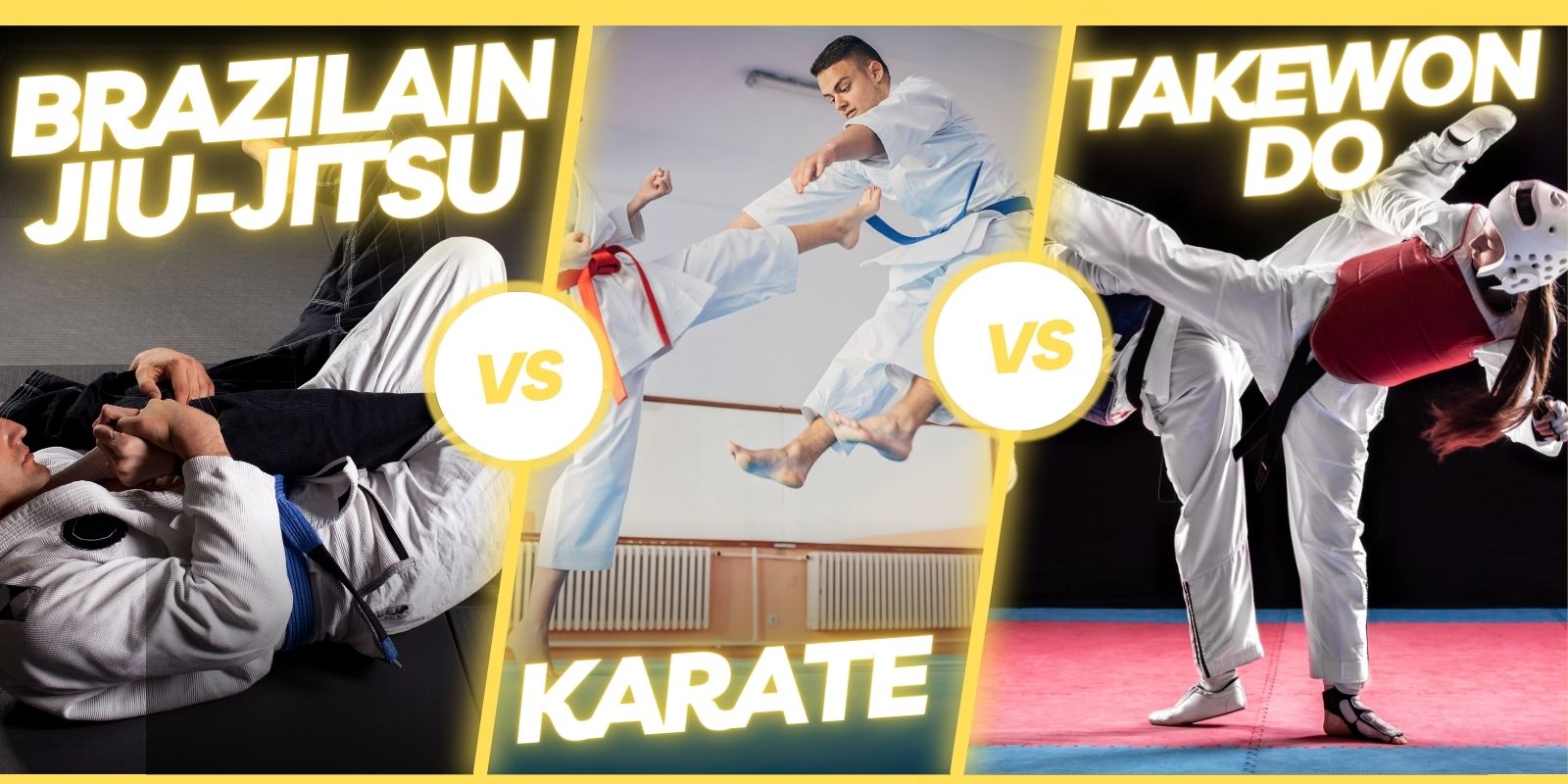

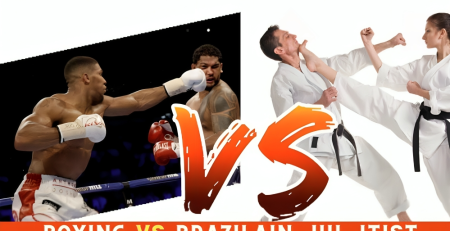

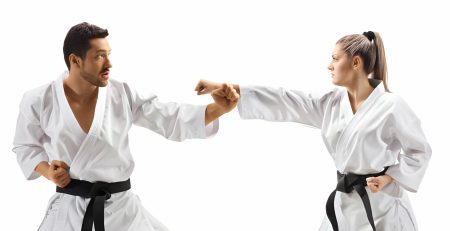
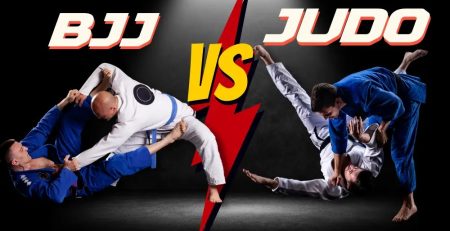
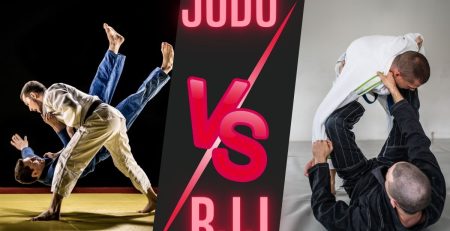
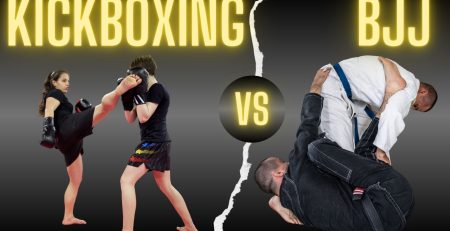





Leave a Reply
You must be logged in to post a comment.